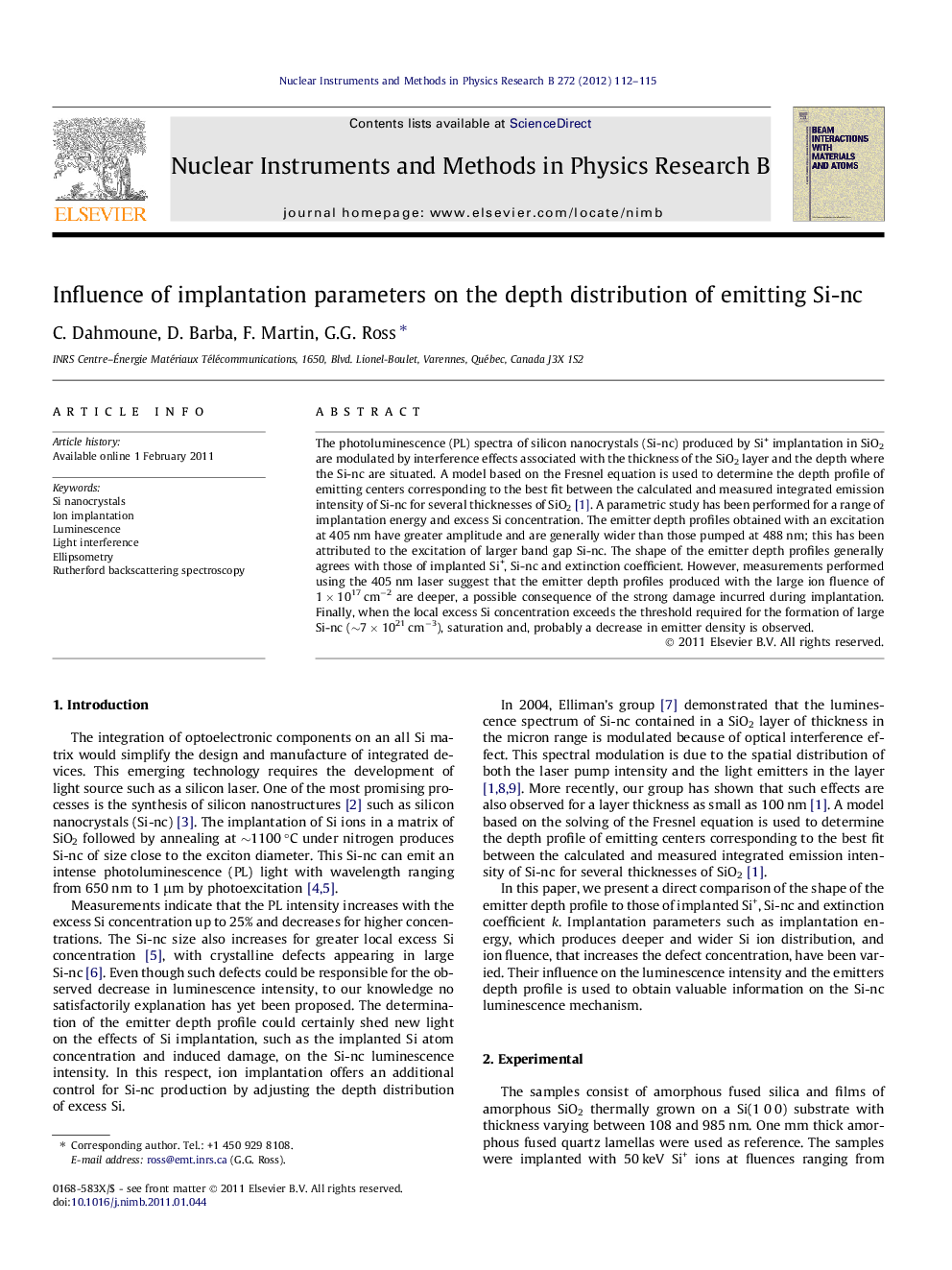| Article ID | Journal | Published Year | Pages | File Type |
|---|---|---|---|---|
| 1680914 | Nuclear Instruments and Methods in Physics Research Section B: Beam Interactions with Materials and Atoms | 2012 | 4 Pages |
The photoluminescence (PL) spectra of silicon nanocrystals (Si-nc) produced by Si+ implantation in SiO2 are modulated by interference effects associated with the thickness of the SiO2 layer and the depth where the Si-nc are situated. A model based on the Fresnel equation is used to determine the depth profile of emitting centers corresponding to the best fit between the calculated and measured integrated emission intensity of Si-nc for several thicknesses of SiO2[1]. A parametric study has been performed for a range of implantation energy and excess Si concentration. The emitter depth profiles obtained with an excitation at 405 nm have greater amplitude and are generally wider than those pumped at 488 nm; this has been attributed to the excitation of larger band gap Si-nc. The shape of the emitter depth profiles generally agrees with those of implanted Si+, Si-nc and extinction coefficient. However, measurements performed using the 405 nm laser suggest that the emitter depth profiles produced with the large ion fluence of 1 × 1017 cm−2 are deeper, a possible consequence of the strong damage incurred during implantation. Finally, when the local excess Si concentration exceeds the threshold required for the formation of large Si-nc (∼7 × 1021 cm−3), saturation and, probably a decrease in emitter density is observed.
